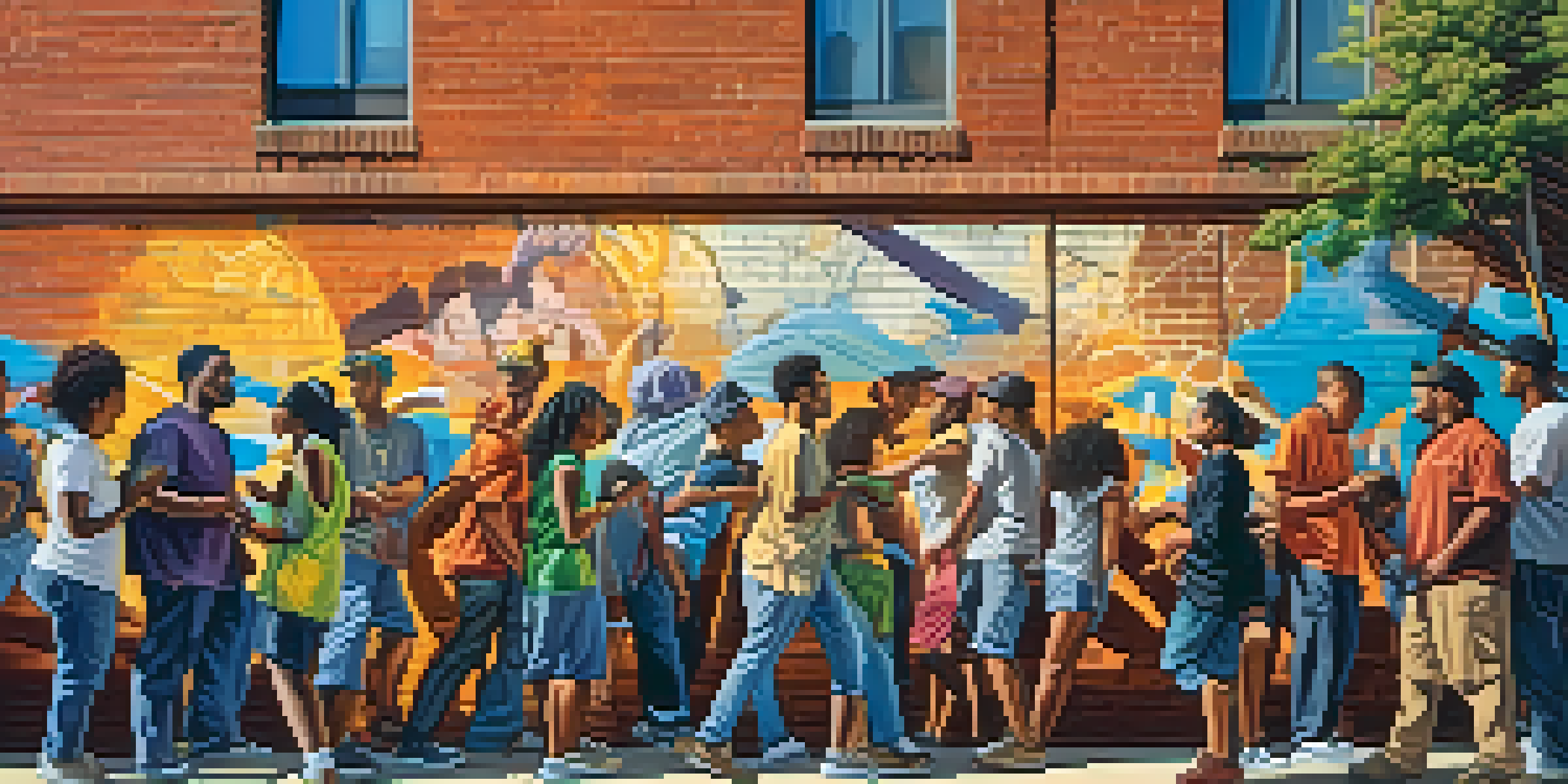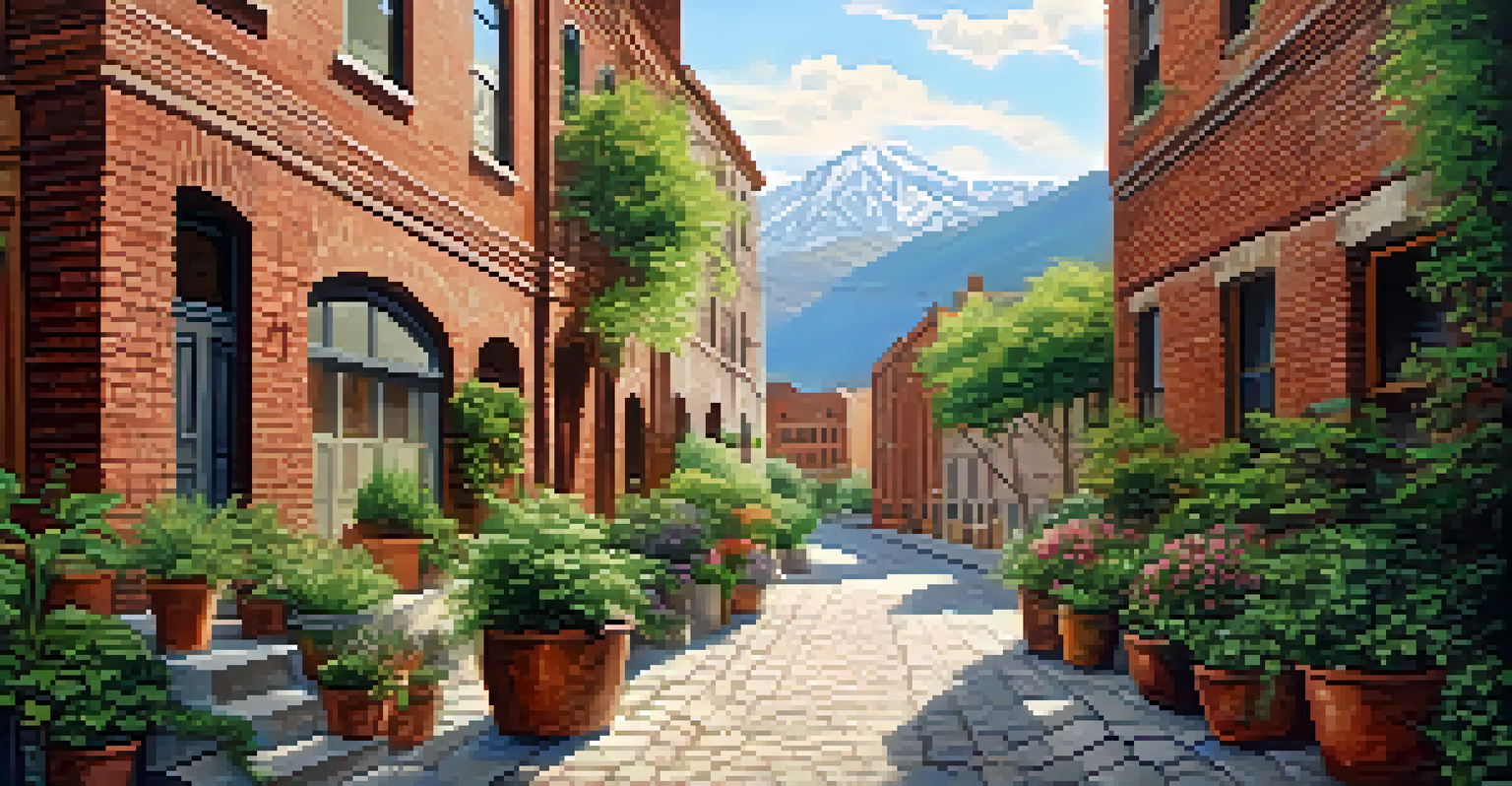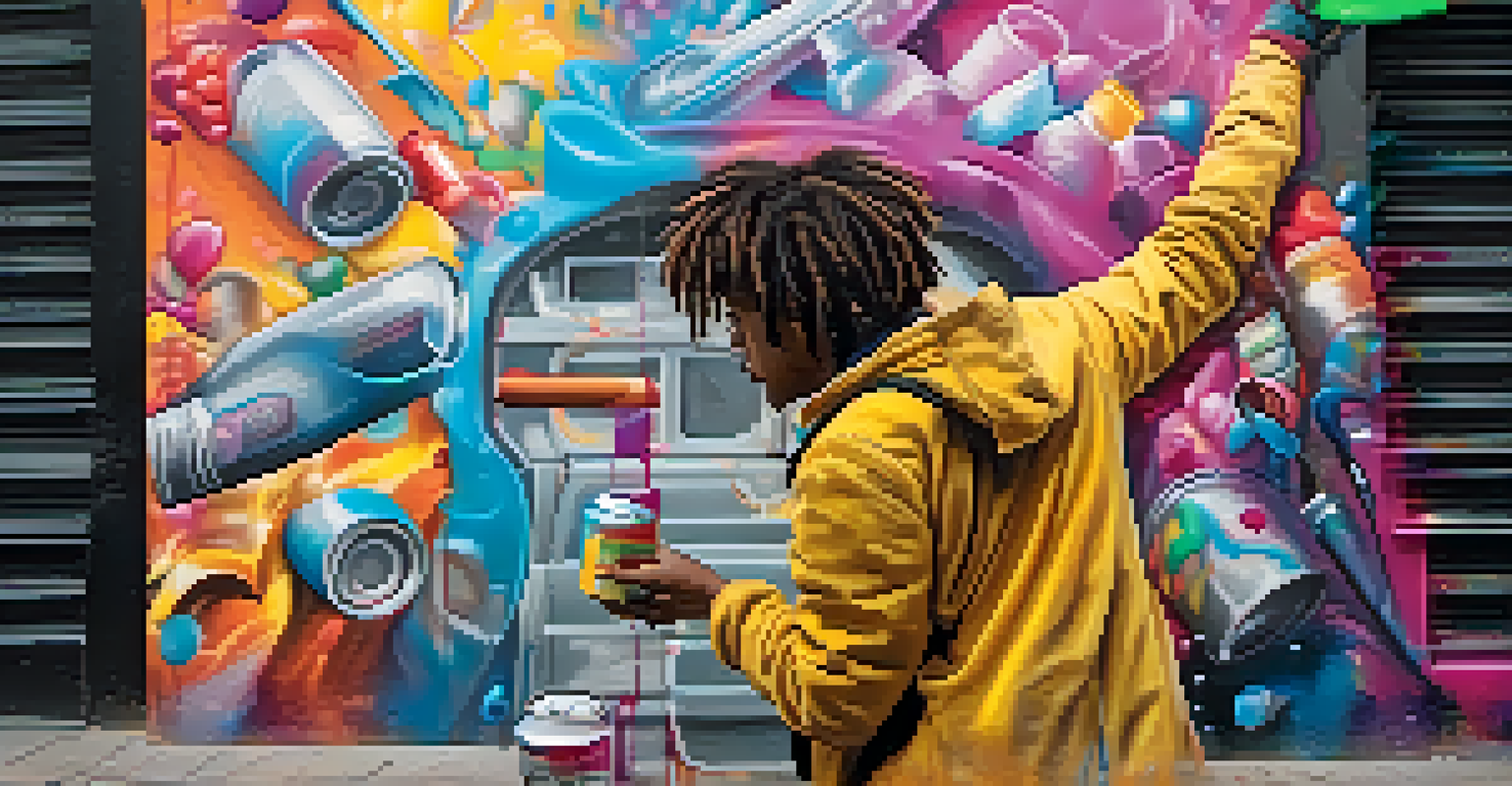The Legal Landscape of Street Art: Rights and Regulations

Understanding Street Art: Definition and Significance
Street art encompasses a wide range of visual art forms created in public spaces, often without permission. From vibrant murals to thought-provoking graffiti, street art serves as a powerful medium for cultural expression and social commentary. This form of art challenges the conventional boundaries of galleries and museums, engaging the community directly.
Art is not a mirror held up to reality, but a hammer with which to shape it.
Beyond its aesthetic appeal, street art often reflects societal issues, making it a vital part of urban culture. Artists use public spaces to voice their perspectives, sparking conversations that might not occur otherwise. It's this intersection of art and activism that makes understanding the legal landscape so crucial.
However, the very nature of street art raises questions about ownership, permission, and legality. As we explore the rights and regulations surrounding street art, we gain insight into how these vibrant expressions fit into the broader legal framework.
Copyright Laws: Who Owns Street Art?
Copyright law protects the rights of creators, but when it comes to street art, things can get murky. Artists typically have copyright over their creations, yet the public nature of street art complicates ownership. Once an artwork is painted on a wall, the question arises: does the artist retain rights, or does the property owner hold claim?

In many cases, artists lose control over their work after it's installed in a public space. This means that property owners can remove or alter the artwork without the artist's consent, leading to disputes. Understanding these copyright nuances is essential for both artists and property owners to navigate the complexities of ownership.
Street Art as Cultural Expression
Street art serves as a powerful medium for cultural expression and social commentary, engaging communities directly.
Some artists may choose to register their work with the U.S. Copyright Office for additional protections. However, the enforcement of these rights can be challenging, particularly when the artwork is created without permission, raising the need for clearer regulations.
The Role of Permission: Legal vs. Illegal Street Art
The distinction between legal and illegal street art often hinges on one critical factor: permission. Legal street art is typically commissioned by property owners or local governments, resulting in a collaborative effort that benefits both parties. In these cases, artists can create without fear of repercussions, and their work is often celebrated.
Street art is a great way to reach people who would never set foot in an art gallery.
On the other hand, illegal street art, or graffiti, can lead to legal consequences for the artist. Many cities classify unauthorized art as vandalism, which can result in fines or even criminal charges. This stark contrast highlights the importance of understanding the local regulations governing street art before picking up a spray can.
Navigating this landscape requires artists to weigh the risks and rewards of their creative expression. While illegal street art can garner attention and provoke thought, it also comes with potential legal battles that can overshadow the art itself.
Local Regulations: Variations Across Cities
Street art regulations can vary dramatically from one city to another, reflecting local attitudes towards public art. Some cities, like Berlin, embrace street art as an integral part of their identity, fostering an environment where artists can thrive. Others, however, may impose strict penalties for unauthorized work, creating a hostile environment for artists.
Understanding these local regulations is crucial for artists looking to make their mark. For instance, cities may have specific permits required for public art installations, while others may offer designated areas for street art. This variance means that artists must do their research before embarking on their projects.
Copyright Challenges for Artists
The public nature of street art complicates ownership, often leaving artists with diminished control over their creations.
In addition, local governments may implement programs that support street artists, providing resources or funding for legal murals. Engaging with these initiatives can help artists navigate the complexities of street art regulations while contributing positively to their communities.
Street Art and the First Amendment: Freedom of Expression
In the context of street art, the First Amendment plays a significant role in discussions about freedom of expression. Artists often utilize their work as a form of protest or commentary on social issues, making the legal landscape a battleground for artistic freedom. However, this raises questions about the limits of free speech in public spaces.
While the First Amendment protects artistic expression, it doesn't grant absolute freedom in every context. When street art is deemed vandalism, it can be subject to removal or legal action, challenging the notion of artistic rights. This dichotomy illustrates the ongoing tension between artistic expression and property rights.
Ultimately, striking a balance between protecting artistic expression and respecting property rights remains a complex challenge. Artists and advocates must continue to engage in dialogues about the importance of street art as a legitimate form of communication.
Case Studies: Landmark Legal Battles in Street Art
Examining landmark legal cases helps illuminate the challenges street artists face when navigating the legal landscape. One notable case involved the renowned artist Banksy, whose works often provoke legal debates surrounding ownership and permission. His art, created in public spaces, has led to numerous disputes over copyright and the rights of the artist versus the rights of the property owner.
Another significant case is that of the Philadelphia Mural Arts Program, which highlights the positive impact of legal street art initiatives. This program not only fosters local talent but also engages the community, creating a harmonious relationship between artists and property owners. Such case studies illustrate the diverse ways cities can approach street art regulation.
Legal Landscape of Street Art
Understanding local regulations is crucial for artists, as the distinction between legal and illegal street art can lead to significant legal consequences.
These examples underscore the importance of establishing clear laws and protections for street artists. By learning from past legal battles, stakeholders can work towards creating a more supportive environment for street art, balancing artistic expression with legal rights.
Future Trends: Evolving Regulations for Street Art
As street art continues to evolve, so too do the regulations surrounding it. Cities are increasingly recognizing the value of street art in enhancing urban landscapes and fostering community engagement. This shift may lead to more lenient regulations and the development of programs that support artists in legal ways.
Additionally, the rise of digital art and technology may impact how street art is perceived and regulated. With tools like augmented reality, artists can create interactive experiences that blur the lines between traditional street art and digital mediums. This evolution presents new challenges and opportunities for legal frameworks.

Ultimately, the future of street art regulation will likely involve a collaborative approach, with artists, property owners, and local governments working together. By fostering dialogue and understanding, stakeholders can create a legal landscape that honors artistic expression while respecting property rights.